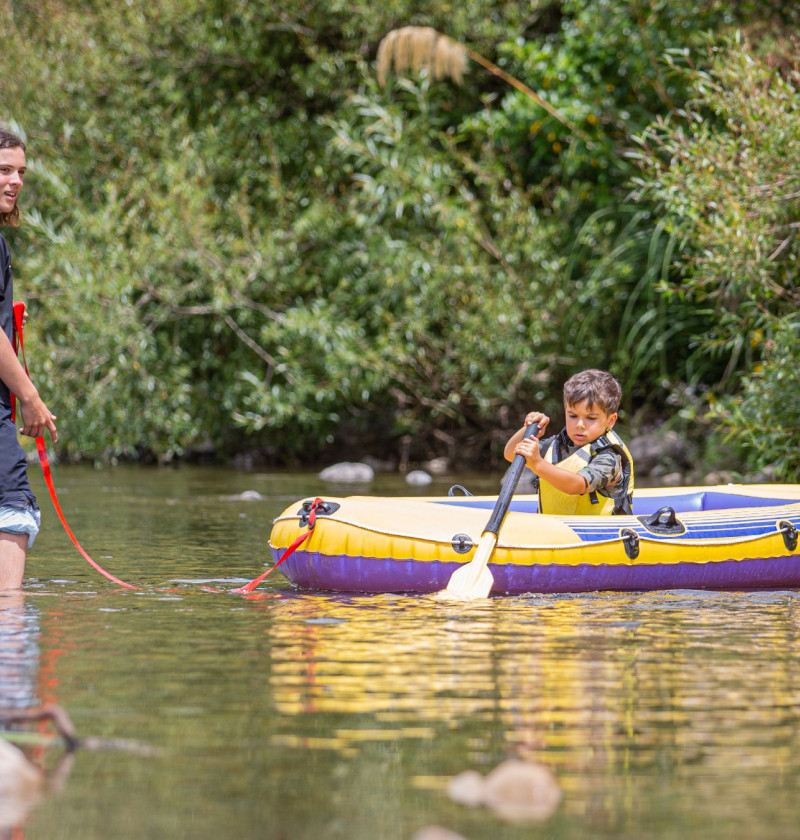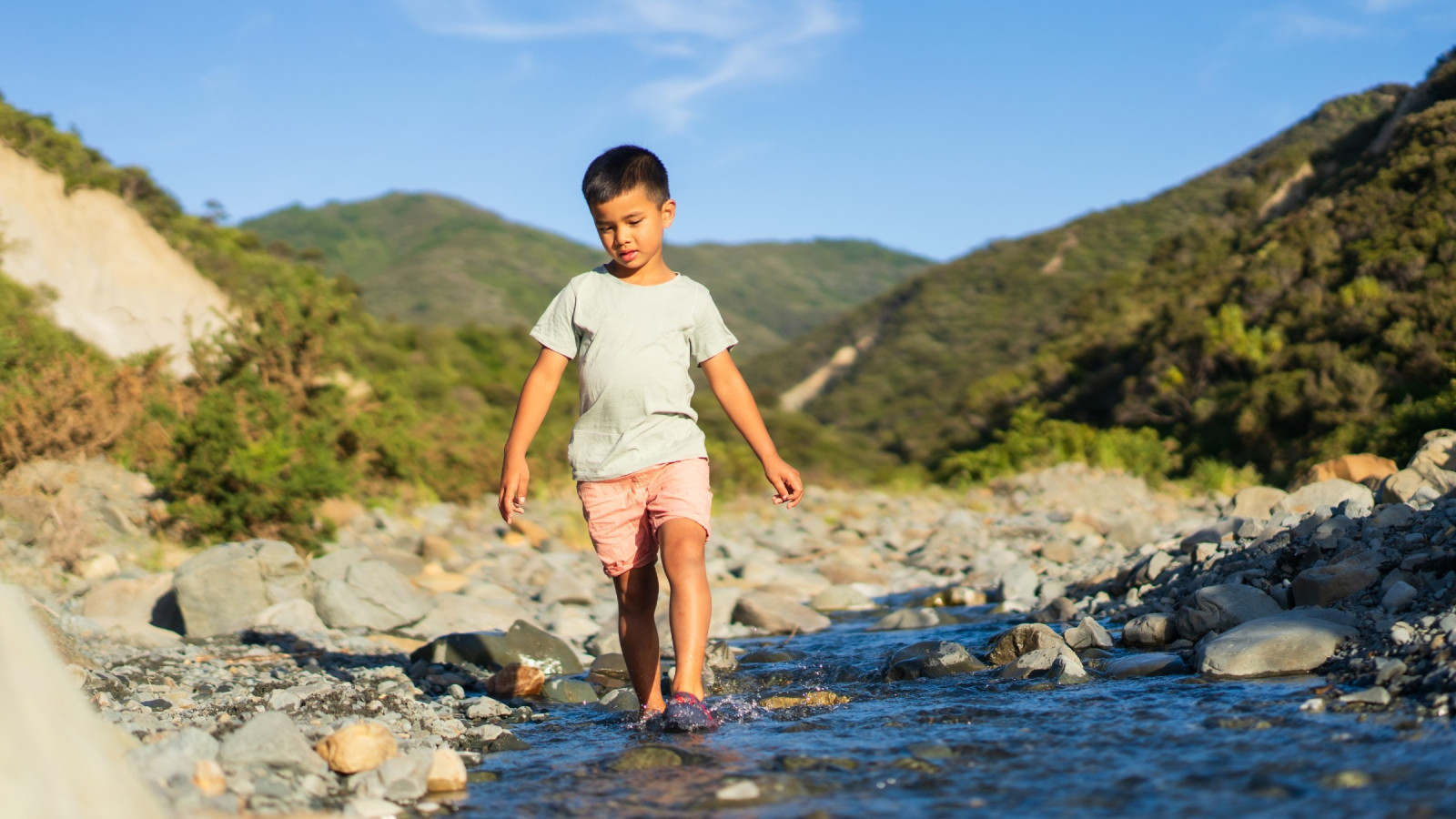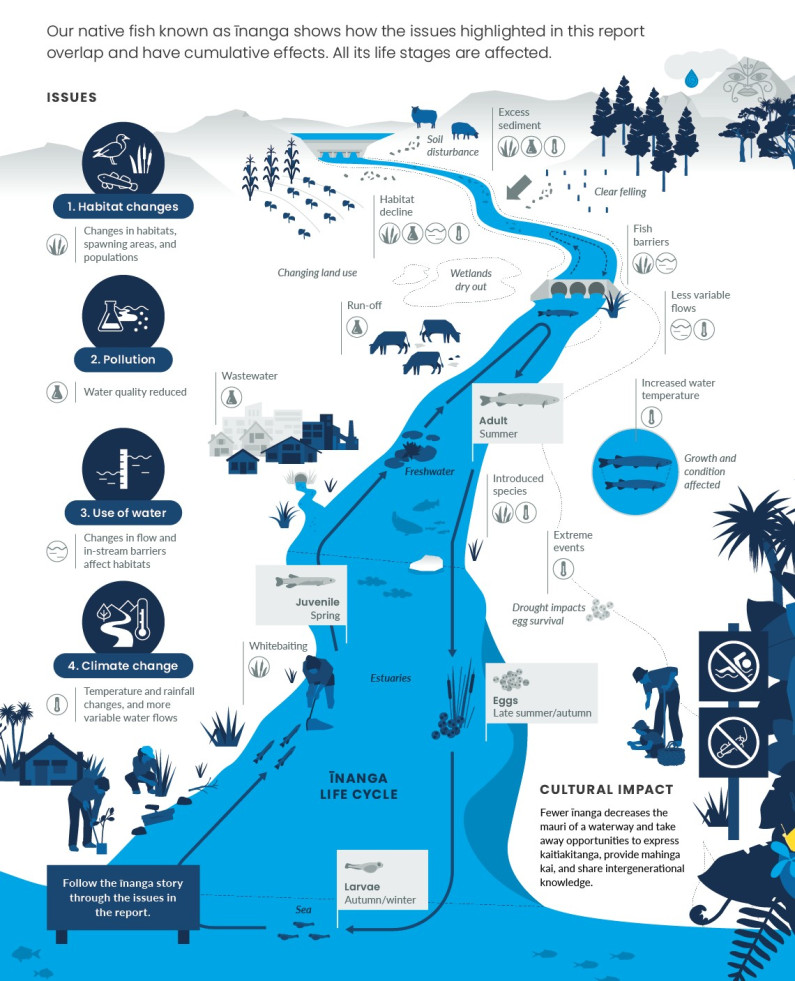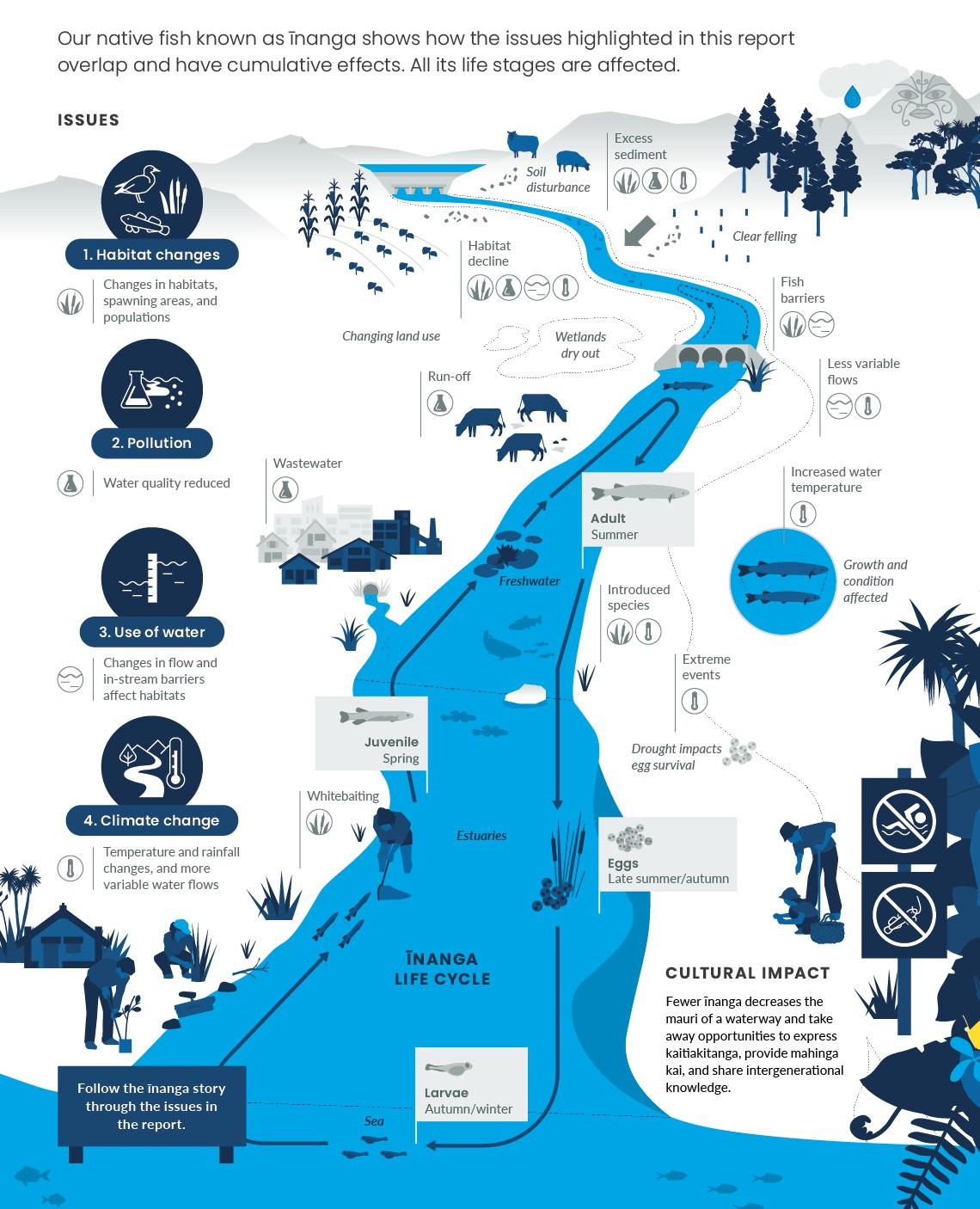Stepping into freshwater

New Zealanders care about the state of our freshwater and Māori consider water to be sacred. For many cultures and religions, water is central to ritual cleansing, rejuvenation, and healing.

Image: iStock
In te ao Māori, a Māori world view, freshwater comes from the parting of Ranginui (sky father) and Papatūānuku (earth mother). These gods share a whakapapa (genealogy) with Māori people, and this underpins the connected relationship that Māori have with the natural environment – mountains, forests, and waters. All these elements are therefore related and hold their own mauri (life force) – a mauri that must continue in order to propagate life.
In 2017, the Whanganui River, Te Awa Tupua and all its physical and metaphysical elements was recognised in law as an indivisible, living whole, that possesses “all the rights, powers, duties, and liabilities” of a legal person. This legal recognition speaks to the relationship of interconnection and reflects a te ao Māori understanding of the world. This understanding is shared by other iwi, hapū, and whānau for their own waterways.
Water is essential for life. It sustains, cleanses, and refreshes our bodies and provides opportunities for recreation. Water supports how we live and how we make a living – it is fundamental for the growth of crops, pasture, and forestry, and generates much of our electricity.
Freshwater is a taonga for Māori. Tribal identity is linked to freshwater, with each water body having its own mauri. For Māori, great care must be taken in managing human impacts on freshwater. To honour the mana (prestige) of water requires practices and policies that first acknowledge the needs of a body of water or waterway. Once these needs have been provided for and are maintained, the water will be able to sustain a full range of environmental, social, cultural, and economic values held by iwi and a community.
Freshwater appears in many forms, from tiny alpine streams and springs to large lakes, wetlands, and the widest rivers. It is also present but unseen in underground rivers and aquifers. Ki uta ki tai – from the mountains to the sea – describes the journey water makes across land as small streams combine and grow bigger, reach estuaries, and eventually meet with the sea. The connections between water on the surface, in the atmosphere, and in groundwater are also part of this holistic concept.
A catchment is the land bounded by hills or mountains that gathers and funnels water into rivers, lakes, groundwaters, and wetlands. Aotearoa New Zealand’s mountains are the source of our 70 major river systems. Along with a multitude of streams, our rivers run for a total of more than 425,000 kilometres.
Variations in the underlying geology and soils, weather, climate, species, and ecosystems make catchments diverse. Catchments in New Zealand vary greatly in size and form – water joins Waikato River from a huge swathe of land between Taupō and Pukekohe, while some Auckland waterways have catchments of only a few hectares.
There are 249,776 hectares of wetland in New Zealand and more than 50,000 lakes – about 4,000 lakes are larger than one hectare and the largest is Taupō. Our freshwater is also stored in reservoirs (artificial lakes or natural lakes with raised water levels) that range in size from small farm dams to hydro lakes that hold more than a billion cubic metres. Underground aquifers also store large volumes of freshwater.
Few of our catchments have not been touched by humans – most contain a mosaic of land uses like cities, towns, farms, horticulture, and plantation forests, as well as native vegetation. As it travels through a catchment, the state of freshwater is strongly influenced by natural factors (like climate, geology, and landforms) and how the land is being used. The intensity of land use and the management practices for each land use also have an influence. Therefore, the state of freshwater in different catchments can be different even if the same land uses are present.
Not all water moves quickly. It can take decades or more – the lag time – for rainwater to move through the soil and into aquifers, sometimes back to rivers and lakes, then exit the catchment. Water can collect and deposit contaminants throughout this journey. In Te Arawa (Rotorua) Lakes, the average lag time is about 50 years, but lag times of more than 100 years in one catchment have been reported (Morgenstern et al, 2015). This means that some of the effects on freshwater we are seeing today are legacies of past activities. Also, the impacts of the decisions made today, including restoration and improved practices, may not be apparent for decades.
Catchments can bring people together. Throughout New Zealand, numerous catchment care groups are working to improve freshwater environments with increasingly positive results. These groups strengthen communities by providing opportunities for people to connect and act around an issue of mutual interest and concern.
The variety of natural and human-made factors that influence different catchments make it challenging to understand how freshwater will respond to change. Our activities in a catchment often interact and have compounding or cumulative effects on freshwater.
Given this complexity and the lack of long-term data, the nature of cumulative effects is difficult to predict (Larned et al, 2018). Data from field monitoring helps to build a picture of cause and effect, but the variability and changeable nature of complex processes can make it virtually impossible to match a cause to any one activity or action.
Activities that happen in a large part of a catchment can add up to a substantial pressure, even if each occurrence seems to have a small effect on its own. Taking water is one example where the overall effect of many small water takes can be large, particularly where many takes occur close together. In parts of Otago, Canterbury, and Hawke’s Bay in 2017/18, computer models of the total volume of water takes (allowed by resource consent but excluding hydroelectricity generation) from many catchments was greater than the estimated natural median flow of the rivers in those catchments.
Installing dams, weirs, and other structures in waterways also has cumulative effects. For example, if there are five structures in one river, and if each structure stops half of the fish moving upstream, then only 3 percent of all fish will make it past all five structures (Franklin et al, 2018).
Different pressures can compound and have cumulative and unexpected effects. A habitat, for example, can be affected by several different pressures at the same time, like sediment, excess nutrients, warmer water, and reduced flows. Individually, each of these pressures has a harmful effect on a stream community (Quinn, 2000), but when they occur simultaneously, the effects are compounded – the damaging effect of sedimentation is stronger when water flows are low (Matthaei et al, 2010) or when water temperatures are higher (Piggott et al, 2012).
In lakes, the combined effects of land use in a catchment and introduced fish and plant species can cause a radical change from a clear, healthy state into a cloudy, degraded state when a threshold is crossed (Schallenberg & Sorrell, 2009).
The story of īnanga (Galaxias maculatus) runs through this report. It helps illustrate some of the interactions between different issues that result in cumulative effects on our native freshwater species and their environment.
Īnanga are a taonga species and the most common and smallest of the native fish caught as whitebait. They move between freshwater and the sea during their life cycle, and lay eggs in vegetation beside streams and rivers where fresh and salt water meet.
Each of the four priority issues discussed in this report touches īnanga in some way, and together cause cumulative effects on this species and its habitats.


Read the long description for Issues overlap and have cumulative effects on īnanga
Our native fish known as īnanga shows how the issues highlighted in this report overlap and have cumulative effects. All its life stages are affected.
Fewer īnanga decreases the mauri of a waterway and takes away opportunities to express kaitiakitanga, provide mahinga kai, and share intergenerational knowledge.
The īnanga story can be followed through the issues in the report.

Stepping into freshwater
April 2020
© Ministry for the Environment